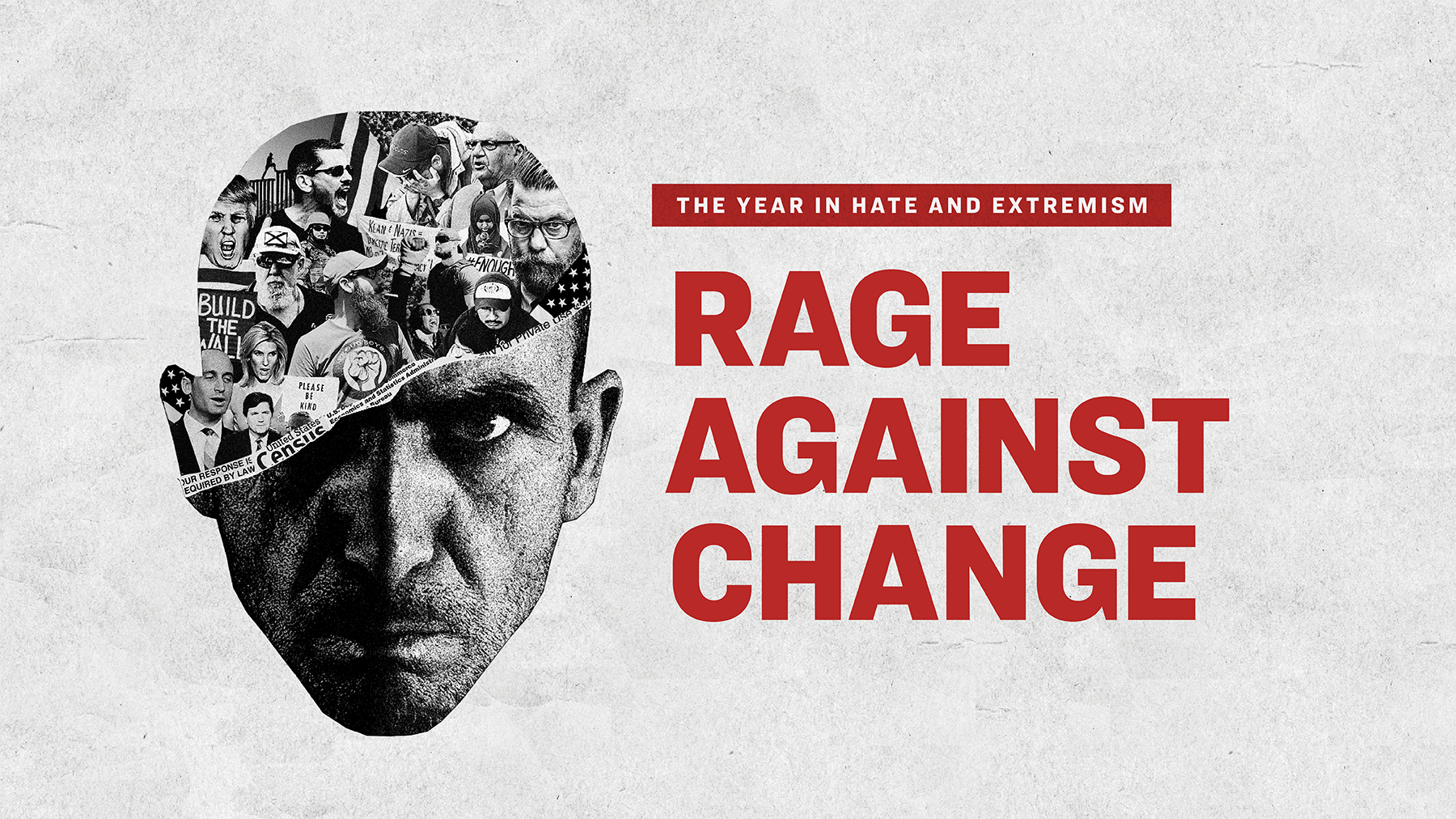The number of hate groups operating across America rose to a record high – 1,020 – in 2018 as President Trump continued to fan the flames of white resentment over immigration and the country’s changing demographics.
It was the fourth straight year of hate group growth – a 30 percent increase roughly coinciding with Trump’s campaign and presidency – following three consecutive years of decline near the end of the Obama administration.
At the same time, racist and antisemitic violence continued to plague the country, following the same escalating pattern as hate groups. FBI statistics show that hate crimes increased by 30 percent in the three-year period ending in 2017. (The FBI has not released figures for 2018.) The increase followed a three-year period in which hate crime incidents fell by about 12 percent.
The SPLC’s annual hate group count and analysis is contained in the Spring edition of the Intelligence Report, released today.
The SPLC today also launched an updated, interactive hate map showing the locations of hate groups nationwide.
“The numbers tell a striking story – that this president is not simply a polarizing figure but a radicalizing one,” said Heidi Beirich, director of the SPLC’s Intelligence Project. “Rather than trying to tamp down hate, as presidents of both parties have done, President Trump elevates it – with both his rhetoric and his policies. In doing so, he’s given people across America the go-ahead to act on their worst instincts.”
Trump was not alone in spreading fear about the country’s growing diversity. Fox News served as both his megaphone and a source for his incendiary claims during 2018. Aided by a chorus of supporters in right-wing media outlets and the advisers in his administration with hate group sympathies, Trump enacted a raft of policies straight out of the radical-right playbook.
But there were growing signs that many among the radical right have begun to sour on Trump, as he failed to deliver on his signature promise – to build a wall at the U.S.-Mexico border. Richard Spencer, the white nationalist leader who prompted Nazi salutes from his audience when he shouted “Hail Trump” after Trump’s 2016 election, put it this way after the 2018 mid-terms: “The Trump moment is over, and it’s time for us to move on.”
A white supremacist world simultaneously emboldened and disappointed by Trump has already proven deadly.
Like many white supremacists, accused synagogue murderer Robert Bowers was obsessed with a fear of “white genocide” and the news of the so-called migrant caravan – “invaders,” as he and Trump called them. Disillusioned, Bowers decided to act against those he thought responsible – the Jewish people. Ten days before the mid-term elections, he killed 11 worshipers at the Tree of Life synagogue in Pittsburgh.
“Trump has given voice to the rage and paranoia of white supremacists, and now there is a very real danger that as extremists lose the hope they saw in his presidency, some will lash out against the people he has demonized and blamed for America’s problems,” Beirich said.
The 1,020 hate groups identified in the new report represent a 7 percent increase over the 954 counted in 2017.
The new total tops the previous high of 1,018 reached in 2011 during the height of a backlash against President Obama, the first black president. From 2011 to 2014, the number fell by nearly 25 percent, to 784. Trump has, as former U.S. Rep. Mark Sanford said, “unearthed some demons.”
The vast majority of hate groups – including neo-Nazis, Ku Klux Klan, racist skinheads, neo-Confederates and white nationalists – adhere to some form of white supremacist ideology. Not surprisingly, the number of white nationalist groups, those particularly electrified by Trump’s presidency, surged by almost 50 percent – from 100 groups to 148 – in 2018.
But in an equal yet opposite reaction, black nationalist groups also expanded their ranks, growing from 233 chapters in 2017 to 264 in 2018. These groups are typically antisemitic, anti-LGBT and anti-white. Unlike white nationalist groups, however, they have virtually no supporters or influence in mainstream politics, much less in the White House.
At year-end, Nation of Islam leader Louis Farrakhan compared Trump to Satan and wrote that Trump was “planning genocide” for black people, a remark reminiscent of the myth of “white genocide” popular within white supremacist culture.
“Hate has frayed the social fabric of our country,” said SPLC President Richard Cohen. “Knitting it back together will take the efforts of all segments of our society – our families, our schools, our houses of worship, our civic organizations and the business community. Most of all, it will take leadership – political leadership – that inspires our country to live up to its highest values.”



